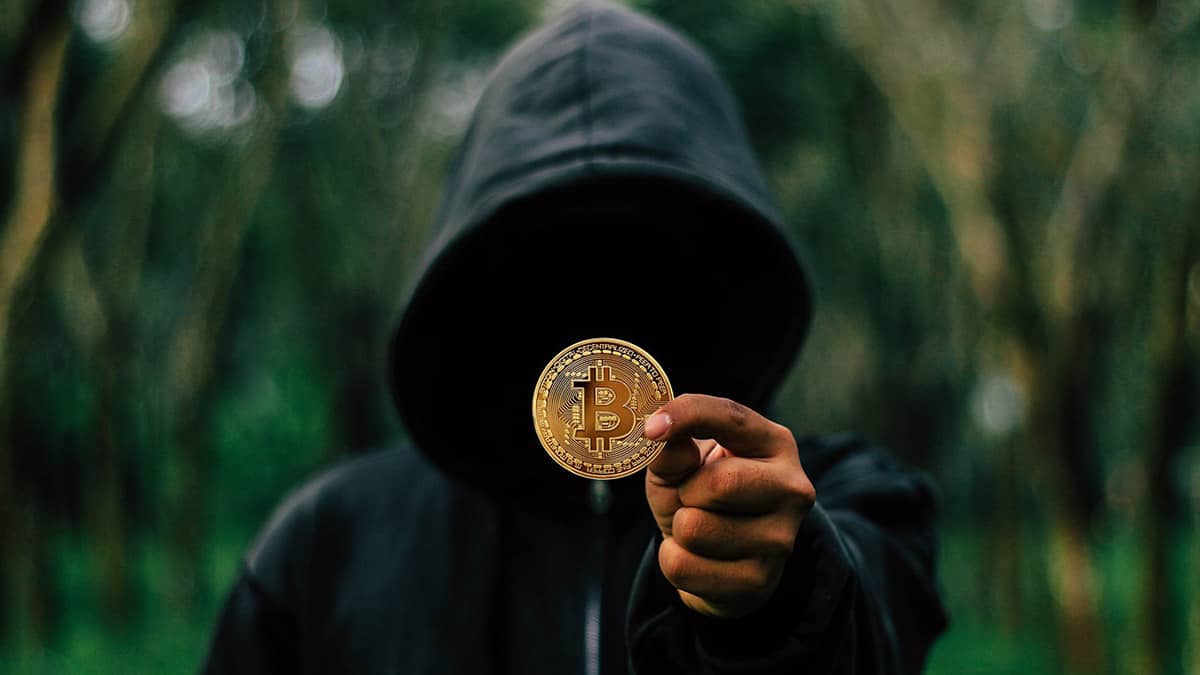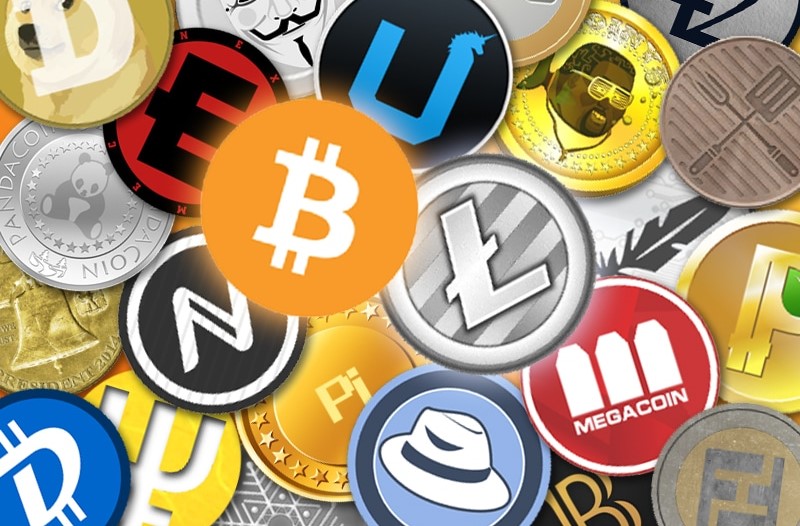Common Crypto Terms Explained

Essential Cryptocurrency Terms Explained: A Beginner's Glossary
Stepping into the world of cryptocurrency can feel like learning a new language. With terms like "blockchain," "staking," "DeFi," and "HODL" frequently used, it's easy for newcomers to feel overwhelmed. This glossary is designed to demystify common crypto jargon for beginners, enabling them to understand discussions and navigate the space more confidently. Understanding this vocabulary is the first step towards navigating the crypto space confidently and safely.
Core Blockchain Concepts
- Blockchain: Imagine a digital record book that is shared and duplicated across thousands of computers worldwide. When a new transaction happens, it's added as a "block" to this chain of records. Because the record book is distributed and cryptographically secured, it's incredibly difficult to tamper with or cheat, creating a transparent and trustworthy system without needing a central authority like a bank. Learn more: What Is Blockchain.
- Cryptocurrency: A type of digital or virtual money secured by cryptography. Most cryptocurrencies operate on blockchain technology, making transactions transparent and decentralized (not controlled by a single entity like a government or bank). Bitcoin was the first, but thousands now exist.
- Decentralization: The principle of distributing power and control across a network rather than concentrating it in a single, central point (like a bank or company). This is a core concept behind most cryptocurrencies, aiming to increase transparency, reduce censorship, and eliminate single points of failure.
- Consensus Mechanism: The set of rules a blockchain network uses to agree on the validity of transactions and the order in which they are added to the blockchain. This ensures all copies of the ledger are consistent. The two most common types are Proof-of-Work (PoW) and Proof-of-Stake (PoS).
- Web3: A broad concept representing the idea of a next-generation internet built on decentralized technologies like blockchain, tokenization, and decentralized identity. It aims for greater user control over data, reduced reliance on large tech platforms, and more peer-to-peer interactions. See: What Is Web3?

Keys, Wallets & Security
- Wallet: A digital tool (software or hardware) used to interact with a blockchain network. It doesn't store your actual crypto (that lives on the blockchain), but holds your Keys (Private and Public) which allow you to send, receive, and manage your assets. See: How To Store Crypto.
- Hot Wallet: A wallet connected to the internet (e.g., mobile apps, browser extensions, web wallets). Convenient for frequent use but more vulnerable to online threats.
- Cold Wallet: A wallet kept offline (e.g., hardware wallets like Ledger/Trezor, paper wallets). Offers maximum security for storing assets long-term.
- Private Key: A long, secret alphanumeric code associated with your wallet. It acts like your ultimate password, granting access to spend or manage the cryptocurrency linked to your wallet's addresses. Must be kept absolutely secret and secure. Losing it means losing your crypto.
- Public Key: A cryptographic code derived from your private key. It's used to generate your public wallet Addresses where others can send you crypto. It's generally safe to share your public addresses.
- Address: A unique string of letters and numbers generated from your public key, representing a destination for sending or receiving cryptocurrency on the blockchain. Think of it like your specific crypto "account number" for a particular coin on a particular network.
- Seed Phrase (or Recovery Phrase): A list of 12 or 24 random words generated by your non-custodial wallet when you first set it up. This phrase acts as a master backup for all the private keys associated with that wallet. If you lose your device, you can restore your entire wallet and funds on a new device using this phrase. Protecting your seed phrase offline is as critical as protecting your private keys.
- 2FA (Two-Factor Authentication): A common security measure used by exchanges and some other services. It requires you to provide two different types of verification (e.g., password + code from an authenticator app) before granting access, adding an extra layer of security against unauthorized logins.
Coins, Tokens & Assets
- Bitcoin (BTC): The first and most well-known cryptocurrency, operating on a Proof-of-Work blockchain. Often seen as "digital gold" due to its scarcity and established network effect.
- Altcoin: Short for "alternative coin," referring to any cryptocurrency other than Bitcoin. Examples include Ethereum, Solana, Cardano, etc. See: Altcoins.
- Token: A type of digital asset built on top of an existing blockchain platform (most commonly Ethereum using standards like ERC-20). Tokens can represent various things, including utility within an application, governance rights, or fractional ownership of an asset. They differ from coins (like BTC or ETH) which are native to their own blockchain.
- Stablecoin: A type of cryptocurrency designed to maintain a stable value by pegging it to another asset, usually a major fiat currency like the US Dollar (e.g., USDC, USDT). Used frequently for trading and in DeFi to avoid volatility. Contrast with Central Bank Digital Currencies.
- NFT (Non-Fungible Token): A unique digital token on a blockchain representing ownership of a specific item, often digital art, collectibles, virtual land, or in-game items. "Non-fungible" means each token is unique and not interchangeable like currency units. See: Are Nfts Dead?.
- Market Cap (Market Capitalization): The total market value of a cryptocurrency. Calculated by multiplying the current market price per coin/token by the total Circulating Supply. Often used to gauge the relative size and significance of different cryptocurrencies.
- Circulating Supply: The number of coins or tokens that are publicly available and actively circulating in the market. This is the number used to calculate market cap.
- Total Supply: The total number of coins or tokens that currently exist, including those that are locked, reserved, or not yet issued, in addition to the circulating supply.
- Max Supply: The maximum number of coins or tokens that will ever be created for a particular cryptocurrency. Some cryptos (like Bitcoin with 21 million) have a hard cap, while others may have an infinite or inflationary supply.

Network Operations & Transactions
- Mining: The process used by Proof-of-Work (PoW) blockchains (like Bitcoin) to validate transactions and create new blocks. Miners use powerful computers to solve cryptographic puzzles, and the winner receives newly created coins and transaction fees. See: Is Bitcoin Mining Still Profitable.
- Staking: The process used by Proof-of-Stake (PoS) blockchains (like Ethereum, Cardano, Solana). Users lock up ("stake") their coins to help secure the network and validate transactions. In return, stakers (or delegators) earn rewards, usually in the form of more coins. See: Crypto Staking.
- Validator: A participant in a PoS network responsible for validating transactions and proposing new blocks. Validators typically need to stake a significant amount of cryptocurrency and maintain reliable node infrastructure.
- Gas: A unit that measures the amount of computational effort required to execute specific operations (like transactions or smart contract interactions) on a blockchain network, particularly Ethereum. Think of it like "fuel" for network operations.
- Gas Fees: The actual cost paid by the user to perform an operation on the blockchain, calculated based on the amount of 'Gas' required and the current network price per unit of Gas (which fluctuates with network congestion). Paid to miners/validators.
- Transaction Hash (TxID or TxHash): A unique alphanumeric string that serves as an identifier for a specific transaction recorded on the blockchain. You can use it to look up transaction details on a block explorer.
- Block Explorer: A web-based tool (like Etherscan.io for Ethereum or Blockchain.com for Bitcoin) that allows anyone to view details about blocks, transactions, addresses, and other data recorded on a public blockchain. Essential for verifying transactions and exploring network activity.
- Confirmation(s): Refers to the number of blocks that have been added to the blockchain after the block containing your transaction. Each new block "confirms" the previous ones. More confirmations generally mean a transaction is more secure and less likely to be reversed (though true finality depends on the specific blockchain). Exchanges often require a certain number of confirmations before crediting a deposit.
- Layer 1 (L1): The base blockchain network itself (e.g., Bitcoin, Ethereum, Solana). These are the foundational protocols.
- Layer 2 (L2): A secondary protocol or framework built on top of a Layer 1 blockchain to improve scalability, speed, or reduce transaction costs (e.g., Polygon PoS, Arbitrum, Optimism for Ethereum; Bitcoin's Lightning Network). Transactions are often processed faster/cheaper on L2s and then periodically bundled or settled on the main L1 chain for security.
Market & Investment Terms
- HODL: Originating from a forum typo of "hold," it signifies a long-term investment strategy of holding onto cryptocurrency assets despite market volatility, reflecting belief in their future value ("Hold On for Dear Life").
- Volatility: The degree and speed at which the price of a cryptocurrency fluctuates. Crypto markets are known for high volatility compared to traditional assets. See: Crypto Volatility.
- DYOR (Do Your Own Research): A fundamental principle in crypto investing. It emphasizes the importance of thoroughly researching a project (team, tech, tokenomics, community) before investing, rather than relying on hype or others' opinions. See: Do Your Own Research (DYOR).
- ATH (All-Time High): The absolute highest price a specific cryptocurrency has ever reached in its trading history.
- ATL (All-Time Low): The absolute lowest price a specific cryptocurrency has ever reached in its trading history.
- FOMO (Fear Of Missing Out): An emotional response where investors feel anxiety about missing out on potentially large profits seen elsewhere, often leading to impulsive buying decisions at high prices.
- FUD (Fear, Uncertainty, Doubt): The spread of negative information, rumors, or propaganda (whether true or false) designed to instill fear and cause others to sell their assets or doubt a project.
Trading & DeFi Concepts
- Exchange (CEX / DEX): A platform for buying, selling, and trading cryptocurrencies.
- Centralized Exchange (CEX): Operated by a company that acts as an intermediary, holds user funds (custodial), and matches buy/sell orders (e.g., Coinbase, Binance, Kraken). See: Understanding Crypto Exchanges.
- Decentralized Exchange (DEX): Operates via smart contracts directly on a blockchain, allowing peer-to-peer trading without a central intermediary. Users typically retain control of their keys (non-custodial) (e.g., Uniswap, PancakeSwap).
- Liquidity Pool: A collection of cryptocurrency tokens locked in a smart contract on a DEX. These pools provide the necessary liquidity for traders to swap between different assets instantly using Automated Market Maker (AMM) algorithms. Users who provide liquidity ("Liquidity Providers" or LPs) earn trading fees.
- Yield Farming: A practice in DeFi where users actively move their crypto assets between different lending protocols and liquidity pools to maximize their returns (yield) from rewards like trading fees or governance tokens. Strategies can be complex and carry significant risks.
- DeFi (Decentralized Finance): An ecosystem of financial applications and services built on blockchain technology, aiming to recreate traditional financial systems (lending, borrowing, trading, insurance) without central intermediaries. See: What Is DeFi?.
- Smart Contract: Self-executing contracts with the terms of the agreement directly written into code on a blockchain. They automatically execute predefined actions when specific conditions are met. Foundational to DeFi and dApps. See: Smart Contracts And Industries Beyond Crypto.
- ICO / IDO / STO: Methods for projects to raise funds by selling newly issued tokens.
- Initial Coin Offering (ICO): An early, often unregulated method. Popular around 2017 but declined due to scams/regulatory issues.
- Initial DEX Offering (IDO): Launching a token directly via a Decentralized Exchange, often combined with liquidity pooling.
- Security Token Offering (STO): A regulated offering where the token is legally classified and treated as a security, subject to relevant regulations.

Blockchain Events & Organizations
- Fork: A change or update to a blockchain's protocol.
- Soft Fork: A backward-compatible update. Nodes that don't upgrade can generally still participate, but may miss out on new features.
- Hard Fork: A non-backward-compatible update, creating a permanent divergence in the chain. If a significant part of the community adopts the new rules while others stick to the old, it can result in two separate blockchains and potentially two separate cryptocurrencies (e.g., Bitcoin and Bitcoin Cash; Ethereum and Ethereum Classic).
- DAO (Decentralized Autonomous Organization): An organization whose rules and operations are encoded in smart contracts on a blockchain. Decisions are typically made collectively by members (often token holders) through on-chain voting mechanisms, aiming for transparency and decentralized governance without traditional hierarchical structures.
Ecosystem Concepts
- dApp (Decentralized Application): An application whose backend code runs on a decentralized peer-to-peer network (like a blockchain) rather than centralized servers. Users often interact with dApps through a web browser connected to a crypto wallet. DeFi protocols and blockchain games are common examples.
Conclusion
Familiarizing yourself with these fundamental cryptocurrency terms is the first step towards understanding conversations, articles, and project documentation within the crypto space. This glossary provides a solid foundation, but remember the ecosystem is constantly evolving with new terminology emerging. Continue learning, stay curious, verify information (DYOR!), and always practice safe investing habits. For a gentle introduction to the basics, check out our Crypto For Beginners guide.







